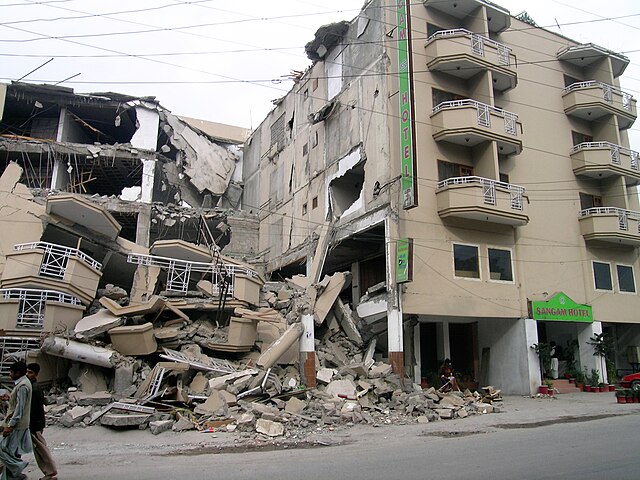As of my last knowledge update in January 2022, the term “Kashmir earthquake” could refer to the earthquake that occurred in the Kashmir region in 2005. Please note that if there have been subsequent earthquakes in the region, I might not have information on those events.
Kashmir Earthquake of 2005:
Causes:
- Tectonic Setting:
- The Kashmir earthquake of 2005 was a result of the complex tectonic interactions between the Indian and Eurasian plates. The Indian plate is colliding with the Eurasian plate, leading to the uplift of the Himalayan mountain range. The earthquake occurred along the convergent boundary between these plates.

- The Kashmir earthquake of 2005 was a result of the complex tectonic interactions between the Indian and Eurasian plates. The Indian plate is colliding with the Eurasian plate, leading to the uplift of the Himalayan mountain range. The earthquake occurred along the convergent boundary between these plates.
- Epicenter:
- The epicenter of the earthquake was near Muzaffarabad in Pakistani-administered Azad Kashmir. The earthquake’s focal point was relatively shallow, contributing to its intensity and the severity of ground shaking.
Key Details:
- Magnitude and Depth:
- The earthquake, often referred to as the South Asian earthquake, had a magnitude of 7.6. It struck on October 8, 2005, at a depth of approximately 26 kilometers.
- Geographical Impact:
- The earthquake had a widespread impact, affecting not only Kashmir but also parts of northern Pakistan, eastern Afghanistan, and northwestern India. The mountainous terrain of the region contributed to the severity of landslides and the destruction of infrastructure.
- Casualties and Displacement:
- The earthquake caused significant casualties and displacement. Tens of thousands of people lost their lives, and many more were injured. Hundreds of thousands of people were left homeless, leading to a humanitarian crisis.
- Infrastructure Damage:
- The earthquake caused extensive damage to infrastructure, including homes, schools, hospitals, and transportation networks. The destruction was particularly severe in remote and mountainous areas, making rescue and relief efforts challenging.
- Aftershocks:
- Numerous aftershocks followed the main earthquake, further contributing to the challenges faced by rescue and relief teams and causing additional damage to already weakened structures.
Aftermath and Response:
- International Assistance:
- The international community responded with an outpouring of support, providing humanitarian aid, financial assistance, and sending rescue teams to assist in the aftermath of the earthquake.
- Humanitarian Crisis:
- The earthquake created a significant humanitarian crisis, with a dire need for emergency medical care, shelter, food, and clean water. The scale of the disaster overwhelmed local and national resources.
- Reconstruction Efforts:
- Reconstruction efforts were launched to rebuild communities and infrastructure. This included the construction of earthquake-resistant buildings and the establishment of better disaster preparedness measures in the region.
- Impact on Diplomatic Relations:
- The earthquake had some impact on diplomatic relations in the region. India and Pakistan, both affected by the earthquake, temporarily set aside some political differences to cooperate on relief efforts.
- Long-Term Consequences:
- The Kashmir earthquake of 2005 had long-term consequences, influencing policies related to disaster management, earthquake preparedness, and infrastructure development in the affected regions.
The Kashmir earthquake of 2005 remains one of the most significant seismic events in recent history, with a profound impact on the lives of those in the affected regions. It underscored the importance of international cooperation in responding to large-scale natural disasters and highlighted the vulnerability of mountainous regions to seismic activity.









